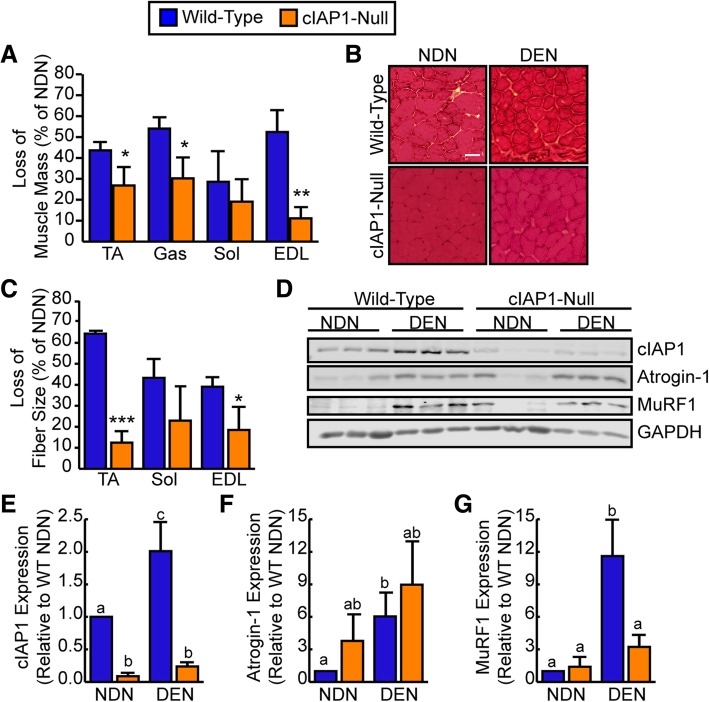Fig. 3.
Genetic ablation of cIAP1 attenuates denervation-induced atrophy. A small (5–10 mm) piece of the right sciatic nerve was removed to induce denervation of the entire right hind limb of 6-week-old C57BL/6 mice (blue bars) or sex- and age-matched cIAP1-null mice (orange bars). The contralateral leg served as an internal control. Mice were sacrificed 14 days post-denervation. a Loss of muscle mass as a percentage of non-denervated control leg mass of tibialis anterior (TA), gastrocnemius (Gas), soleus (Sol), and extensor digitorum longus (EDL) (n = 4). b Representative images of TA muscle sections stained with H&E from mice described above. Scale bar = 20um. c Loss in TA, Sol, and EDL fiber size as a percentage of non-denervated control leg cross-sectional area (n = 4). d Representative western blots of cIAP-1, Atrogin-1, MuRF1, and GAPDH protein expression in Gas muscle from non-denervated (NDN) and denervated (DEN) hind limbs of C57BL/6 and cIAP1-null mice. Quantification of e cIAP1, f Atrogin-1, and g MuRF-1 protein expression normalized with total protein and relative to wild-type non-denervated (WT NDN) muscle (n = 3). Data is the mean ± SEM, *p < 0.05, **p < 0.01, and ***p < 0.001, means with no common letters are significantly different from each other (p < 0.05)

